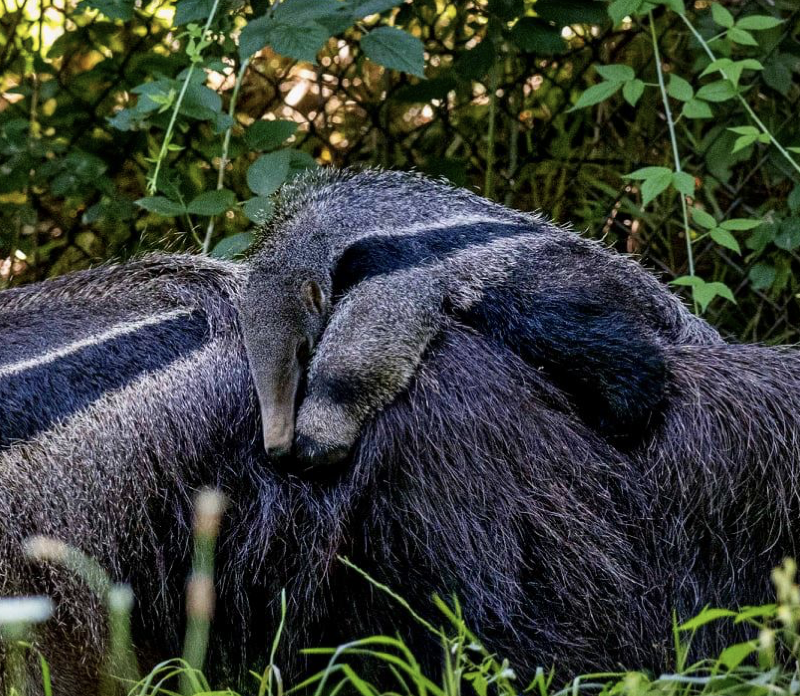
BRIDGEPORT, Conn. – Connecticut’s Beardsley Zoo has received verification from the Association of Zoos and Aquariums’ (AZA) Anteater Advisory Group that the Giant anteater pup born on June 15 is a girl. Giant anteaters, unlike most mammalian species, are not easy to sex from their body size, color, and external genitalia. That the baby’s gender is female is welcome news for the species, as the population in Giant anteaters is skewed more heavily toward males than females.
The baby, born on June 15 after a 75-day gestation period, is increasingly independent. She occasionally rides on her mother’s back, but she spends more time on her own as she grows. In addition to nursing, she now is fed a mixture of grain and water in a smoothie, the same formulation given to her parents. At nine days old, the baby weighed 4.3 pounds. On December 4, she weighed 39 pounds.
This is the third Giant anteater baby born at the Zoo to third time dad, E.O., and fourth time mom, Pana. The pair was brought to Connecticut’s only Zoo with the hopes of successful breeding, which occurred for the first time in 2016.
“We couldn’t be happier that our Giant anteater baby is a girl, important for the continuation of this vulnerable species,” explained Zoo Director Gregg Dancho. “We look forward to offering an opportunity to vote on her name in the near future.”
Mochilla, the pair’s first offspring, is now in residence at Alexandria Zoo in Louisiana. The second-born, Tupi, is now at the Nashville Zoo in Tennessee.
The Giant anteater parents came to the Zoo from Palm Beach Zoo in Palm Beach, Florida. Both Pana and EO are twelve years old. They arrived in late May 2015 and are a highlight of the Pampas Plains habitat, which opened in August 2015. Featuring animals from the Pampas region of Argentina, Uruguay, and Brazil, the exhibit represents the Zoo’s South American Adventure.
About Giant Anteaters
Giant anteaters can live up to 26 years in human care and are usually solitary animals. They weigh up to 100 pounds, and are five to seven feet long. Their home range is from southern Belize to northern Argentina and they live in grasslands, humid forests, and woodland areas. Anteaters have one of the lowest body temperatures in the animal kingdom at 91 to 97 degrees Fahrenheit and can eat up to 30,000 ants per meal in the wild. The Latin name for anteater is Vermillingua, meaning "worm tongue," which can be as long as two feet.
Tickets must be purchased on the Zoo’s website at beardsleyzoo.org: we recommend that guests continue to wear masks while visiting the Zoo, but when guests are outside and are able to maintain social distance, masks may be removed. In any indoor area, or when social distancing cannot be maintained, masks are required. Everyone over the age of two, with the exception of those with medical conditions that preclude wearing them, should have a mask available.